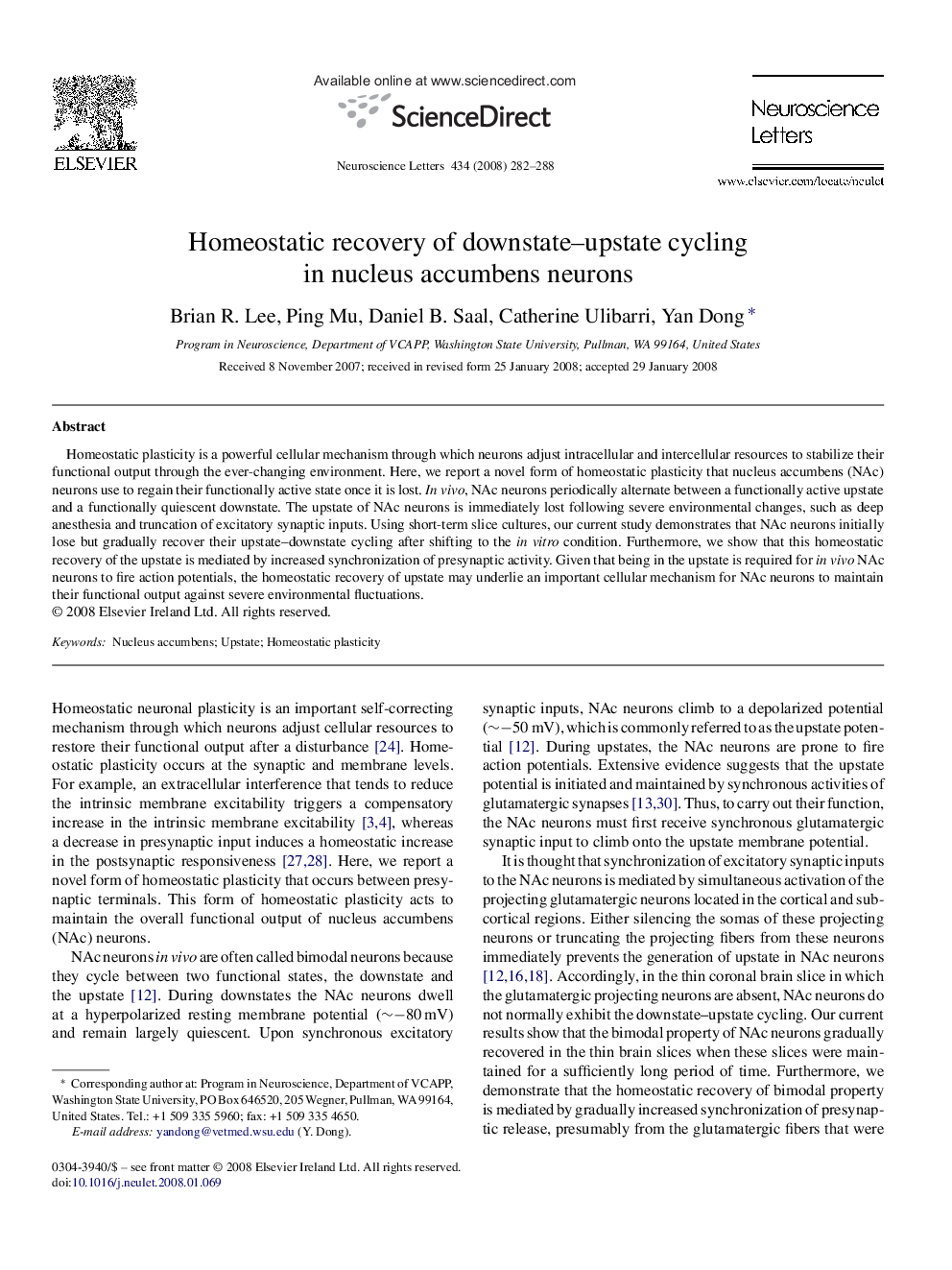| Article ID | Journal | Published Year | Pages | File Type |
|---|---|---|---|---|
| 4348572 | Neuroscience Letters | 2008 | 7 Pages |
Homeostatic plasticity is a powerful cellular mechanism through which neurons adjust intracellular and intercellular resources to stabilize their functional output through the ever-changing environment. Here, we report a novel form of homeostatic plasticity that nucleus accumbens (NAc) neurons use to regain their functionally active state once it is lost. In vivo, NAc neurons periodically alternate between a functionally active upstate and a functionally quiescent downstate. The upstate of NAc neurons is immediately lost following severe environmental changes, such as deep anesthesia and truncation of excitatory synaptic inputs. Using short-term slice cultures, our current study demonstrates that NAc neurons initially lose but gradually recover their upstate–downstate cycling after shifting to the in vitro condition. Furthermore, we show that this homeostatic recovery of the upstate is mediated by increased synchronization of presynaptic activity. Given that being in the upstate is required for in vivo NAc neurons to fire action potentials, the homeostatic recovery of upstate may underlie an important cellular mechanism for NAc neurons to maintain their functional output against severe environmental fluctuations.
